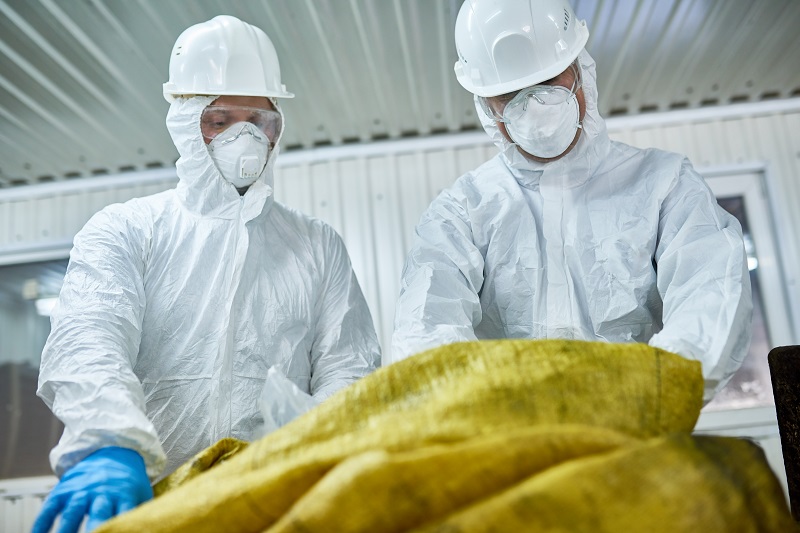
Low angle portrait of two workers wearing biohazard suits working at waste processing plant sorting recyclable materials on conveyor belt
Definition and Purpose of Staging
Mesothelioma staging is a process used to describe how far the disease has spread in the body. This framework is critical in helping doctors design a treatment plan that fits the patient’s condition. Staging systems aim to provide a clear picture of the disease’s progression, making it easier to predict outcomes and guide medical decisions. The stages generally range from localized cancer to more advanced disease that has spread to other organs.
Historical Development of Staging Systems
The concept of staging mesothelioma has evolved over time. Early systems were basic, focusing primarily on tumor size and location. Over the years, medical advancements led to more detailed frameworks that consider lymph node involvement and metastasis. These refinements have improved the accuracy of staging and its usefulness in clinical settings. Today, multiple staging systems exist, each tailored to specific aspects of the disease.
Importance in Treatment Planning
Staging plays a central role in determining the best course of action for treating mesothelioma. For instance, early-stage mesothelioma might be treated with surgery, while advanced stages often require a combination of therapies like chemotherapy and radiation. Knowing the stage also helps doctors discuss prognosis and treatment options with patients and their families, ensuring they have realistic expectations about outcomes. In short, staging is the foundation for personalized and effective care.
The Role of Staging in Mesothelioma Diagnosis
How Staging Guides Diagnosis
Mesothelioma staging plays a central role in determining how far the cancer has spread within the body. This process helps doctors outline the best course of action for treatment. By categorizing the disease into stages, healthcare teams can identify whether the cancer is localized or has advanced to other areas. Staging also assists in deciding which diagnostic tools—like imaging scans or biopsies—are most useful at each phase of the disease’s progression. For example:
- Early stages might require imaging to confirm tumor size and location.
- Advanced stages often involve more comprehensive tests to assess metastasis.
- Staging results guide the choice of therapies, from surgery to palliative care.
This structured approach ensures that patients receive care tailored to their specific condition.
Impact on Prognosis and Survival Rates
The stage of mesothelioma at diagnosis is a key factor in predicting patient outcomes. In general, earlier stages are associated with better survival rates, as treatments like surgery and chemotherapy are more effective when the cancer is confined. On the other hand, later stages often mean the cancer has spread, limiting treatment options. By understanding the stage, doctors can provide patients with a clearer picture of their prognosis. For instance, patients in earlier stages may focus on curative treatments, while those in advanced stages might prioritize symptom management.
Differentiating Between Early and Advanced Stages
Staging systems help distinguish between early and advanced mesothelioma, which is critical for both treatment and patient expectations. Early stages typically involve smaller tumors confined to one area, while advanced stages often show extensive spread to lymph nodes or distant organs. This distinction affects everything from surgical options to the likelihood of remission. The ability to clearly define these stages allows healthcare teams to set realistic goals and prepare patients for what lies ahead.
For more information on how staging aids in treatment planning, visit mesothelioma staging.
Key Components of Mesothelioma Staging
Tumor Size and Location
When it comes to mesothelioma staging, one of the first things doctors look at is the tumor itself. Its size and where it’s located in the body are critical factors. A smaller tumor that’s confined to one area is often easier to treat than one that’s spread across multiple regions. Understanding tumor size and location helps doctors decide on the best treatment options. For example, a localized tumor might be removed surgically, while a larger one may need chemotherapy or radiation first.
Lymph Node Involvement
Another key aspect is whether the cancer has reached the lymph nodes. Lymph nodes act like filters for your immune system, and cancer spreading to them usually means it’s more advanced. Doctors often check nearby lymph nodes to see if cancer cells are present. This step is important because it can significantly affect both treatment plans and survival rates. For example, if lymph nodes are involved, systemic therapies like chemotherapy might be prioritized over localized treatments.
Metastasis to Other Organs
Finally, the most serious stage of mesothelioma involves metastasis, or the spread of cancer to other organs. This could include the lungs, liver, or even the brain. When metastasis occurs, treatment becomes more about managing symptoms and improving quality of life rather than curing the disease. Doctors use imaging tests and sometimes biopsies to confirm metastasis. Knowing whether the cancer has spread helps set realistic expectations for outcomes and guides the overall care strategy.
The TNM Staging System for Mesothelioma
Overview of the TNM System
The TNM staging system is one of the most widely used frameworks for classifying mesothelioma. It breaks down the disease into three main components: Tumor (T), Nodes (N), and Metastasis (M). This system helps doctors assess how far the cancer has progressed and guides treatment options. Tumor size and location are key factors in determining the “T” stage, while the involvement of nearby lymph nodes defines the “N” stage. Finally, the “M” stage evaluates whether the cancer has spread to distant organs.
Stages Defined by Tumor Growth
The “T” category focuses on the tumor’s size and its local spread. Here’s how it’s broken down:
- T1: Tumor is confined to the pleural lining on one side of the chest.
- T2: Tumor begins to invade nearby structures like the diaphragm or lung tissue.
- T3: Tumor extends further into the chest wall or other nearby areas but is still potentially resectable.
- T4: Tumor has grown extensively and is considered unresectable.
Each stage reflects the tumor’s progression, influencing both prognosis and treatment strategies.
Role of Lymph Nodes and Metastasis
The “N” and “M” categories provide additional layers of detail. For lymph nodes:
- N0: No lymph node involvement.
- N1: Cancer has spread to nearby lymph nodes on the same side as the tumor.
- N2: More distant lymph nodes are affected.
For metastasis:
- M0: No distant spread of the cancer.
- M1: Cancer has metastasized to distant organs, such as the liver or bones.
These classifications are critical for determining the overall stage of the disease. The IASLC Pleural Mesothelioma Staging Project has proposed updates to the TNM groupings, aiming to improve staging precision and patient outcomes.
The Brigham Staging System Explained
Focus on Surgical Resectability
The Brigham Staging System stands out because it prioritizes whether a mesothelioma tumor can be surgically removed. This approach is different from other systems, which often focus more on the size or location of the tumor. Surgical resectability is the cornerstone of this system, making it particularly useful for determining treatment options. It divides mesothelioma into four stages, much like other staging systems, but with a unique emphasis on operability and lymph node involvement.
Stages Based on Tumor Spread
The stages in the Brigham system are designed to reflect how far the cancer has spread. Here’s a breakdown:
- Stage 1: The tumor is localized and can be completely removed through surgery. There’s no involvement of the lymph nodes.
- Stage 2: The tumor remains resectable, but nearby lymph nodes are now affected.
- Stage 3: The cancer has spread into surrounding tissues, making surgery much more difficult or impossible.
- Stage 4: The disease has metastasized to distant organs, similar to Stage 4 mesothelioma in other systems, and surgery is no longer a viable option.
Limitations of the Brigham System
While the Brigham system is valuable, it’s not without its drawbacks. For one, it heavily depends on the assumption that surgery is a feasible option for most patients. Unfortunately, many mesothelioma cases are diagnosed at later stages when surgery isn’t viable. Additionally, the system doesn’t account for other factors like tumor biology, which can also influence treatment outcomes. Despite these limitations, the Brigham system remains a helpful tool, especially in cases where early diagnosis allows for surgical intervention.
The Butchart Staging System Overview
Historical Significance of Butchart System
The Butchart Staging System holds a significant place in the history of mesothelioma diagnosis. Developed in the late 1970s, it was the first widely accepted method for classifying the progression of this rare cancer. This system laid the groundwork for understanding how mesothelioma spreads throughout the body. While it has largely been replaced by newer methods, its historical value remains undeniable, as it provided a foundation for more advanced staging systems like the Brigham System.
Stages Based on Tumor Location
The Butchart System categorizes mesothelioma into four stages, primarily based on the location of the tumor rather than its size or lymph node involvement. This approach focuses on where the cancer is found and how far it has spread:
- Stage 1: Tumor is confined to one side of the chest, typically within the pleural lining.
- Stage 2: Cancer has spread to the chest wall or esophagus but remains on one side.
- Stage 3: Tumor has spread to the diaphragm or other nearby organs, possibly involving lymph nodes.
- Stage 4: Cancer has metastasized to distant organs, such as the liver or brain.
This location-based staging helps in identifying how advanced the disease is, even if it lacks the precision of modern systems like the TNM.
Relevance in Modern Medicine
Though the Butchart System is no longer the primary method used, it still serves as a reference point for understanding mesothelioma’s progression. Modern systems, such as the TNM and Brigham, have improved upon its limitations by incorporating more detailed criteria like tumor size and lymph node status. However, the simplicity of the Butchart System makes it easier to explain the disease’s progression to patients, especially those unfamiliar with medical jargon.
For those comparing staging systems, the Butchart System offers a straightforward approach, while newer methods like the Brigham System provide a more nuanced understanding of the disease. Both systems play a role in shaping how mesothelioma is diagnosed and treated today.
Comparing Different Mesothelioma Staging Systems
Strengths and Weaknesses of Each System
When it comes to mesothelioma staging, each system has its own unique approach. The TNM system, for instance, is widely used because it provides detailed information on tumor size, lymph node involvement, and metastasis. This makes it particularly helpful for determining the extent of the disease. On the other hand, the Brigham system focuses more on whether the tumor can be surgically removed, which can be a key factor in treatment decisions. Meanwhile, the Butchart system, though older, categorizes stages based on tumor location, offering a simpler but less detailed perspective. Each system has its strengths, but also its limitations, depending on the specific needs of the diagnosis and treatment plan.
How Systems Complement Each Other
Rather than relying on a single staging system, doctors often use multiple systems to get a fuller picture of the disease. For example, the TNM system’s detailed breakdown can be paired with the Brigham system’s focus on surgical options to guide both diagnosis and treatment. Similarly, the Butchart system’s straightforward approach can provide a quick overview before diving into more detailed assessments. This complementary use ensures that patients receive the most accurate and tailored care possible.
Choosing the Right System for Diagnosis
Selecting the right staging system depends on several factors, including the type of mesothelioma and the available medical resources. For pleural mesothelioma, the TNM system is often preferred due to its comprehensive nature, especially in cases where understanding the disease’s spread is critical. However, in situations where surgical options are being considered, the Brigham system may take precedence. Ultimately, the choice of staging system is guided by the specific needs of the patient and the expertise of the medical team.
Advancements in Mesothelioma Staging Techniques
Role of Imaging Technologies
Imaging technologies have come a long way in helping doctors stage mesothelioma more accurately. Traditional X-rays and CT scans still play a role, but newer methods are making a real difference. For example, recent advancements in X-ray techniques like dark-field radiography are offering clearer and more detailed images of affected tissues. These tools are especially helpful in spotting smaller tumors that might otherwise go unnoticed. PET scans, which track metabolic activity, are also being used to differentiate between active cancer cells and scar tissue, making staging more precise.
Biomarkers in Staging Accuracy
Biomarkers are another big step forward. These are substances, often found in blood or tissue, that can indicate the presence of mesothelioma. Researchers are identifying specific biomarkers that not only confirm the disease but also help in determining its stage. For instance, proteins like mesothelin and fibulin-3 are being studied for their potential to assess how far the cancer has spread. This kind of targeted approach means doctors can tailor treatments more effectively, improving outcomes for patients.
Emerging Research and Innovations
The field of mesothelioma staging is constantly evolving. Scientists are exploring new techniques, such as photodynamic therapy, which uses light-sensitive drugs to highlight cancer cells during imaging. This method, detailed in studies on photodynamic therapy, could make it easier to map the spread of the disease. There’s also growing interest in artificial intelligence, which could analyze imaging data and biomarkers faster and with fewer errors than human interpretation. These innovations are not just theoretical—they’re actively being tested and could soon become part of routine care.
In summary, advancements in imaging, biomarkers, and cutting-edge research are making mesothelioma staging more accurate and effective. These tools are giving doctors better ways to understand the disease, which ultimately benefits patients.
Challenges in Mesothelioma Staging
Difficulties in Accurate Staging
Mesothelioma is notoriously hard to stage accurately. The disease often presents itself in a subtle way, making it tough to pinpoint its progression. One major challenge is the long latency period, with symptoms emerging decades after asbestos exposure. This delay complicates the ability to determine the exact stage at diagnosis. Additionally, mesothelioma tends to spread in unusual patterns, which can confuse even experienced specialists.
Variability in Patient Presentation
No two mesothelioma cases are exactly alike. Patients may exhibit a variety of symptoms, or sometimes none at all, depending on the tumor’s location and spread. This variability makes it hard to apply a one-size-fits-all staging system. For instance, a patient in Stage 2 mesothelioma might show signs that overlap with either earlier or later stages, leading to potential misclassification.
Impact of Rare Mesothelioma Types
Rare forms of mesothelioma, such as pericardial or testicular mesothelioma, add an extra layer of complexity. These types are not only uncommon but also poorly understood, making staging even more difficult. The lack of standardized criteria for these rare cases often leaves doctors relying on educated guesses rather than clear guidelines.
In summary, mesothelioma staging faces hurdles due to delayed symptom onset, inconsistent patient symptoms, and challenges posed by rare forms of the disease. Addressing these issues requires ongoing research and collaboration among medical experts.
The Future of Mesothelioma Staging Systems
Potential for Personalized Staging
The future of mesothelioma staging is heading toward a more tailored approach. Personalized staging could consider not just the tumor’s physical characteristics but also genetic and molecular data unique to each patient. This deeper understanding might allow doctors to predict how a tumor will behave or respond to certain treatments. Personalized staging could redefine how treatment plans are created, making them more precise and effective. For instance, a patient’s specific biomarkers might help determine whether surgery, chemotherapy, or immunotherapy is the best course of action.
Integration of Artificial Intelligence
Artificial intelligence (AI) has the potential to revolutionize mesothelioma staging. AI algorithms can analyze complex imaging scans and medical records faster and with greater accuracy than humans. This technology might help identify subtle patterns that indicate disease progression or response to treatment. AI could also assist in standardizing staging across different healthcare systems, reducing variability. The IASL Cancer Pleural Mesothelioma Staging Project has already proposed revisions that could benefit from AI’s capabilities to improve staging accuracy.
Global Efforts in Standardization
Efforts are underway to create a unified staging system that can be used worldwide. Currently, mesothelioma staging varies, making it hard to compare outcomes or develop universal treatment guidelines. A standardized system would improve communication among healthcare providers and researchers. Additionally, global collaboration could lead to advancements like updated survival analyses, such as the 3-year immunotherapy analysis, which showed promising results. This kind of data could inform better staging criteria and treatment protocols.






